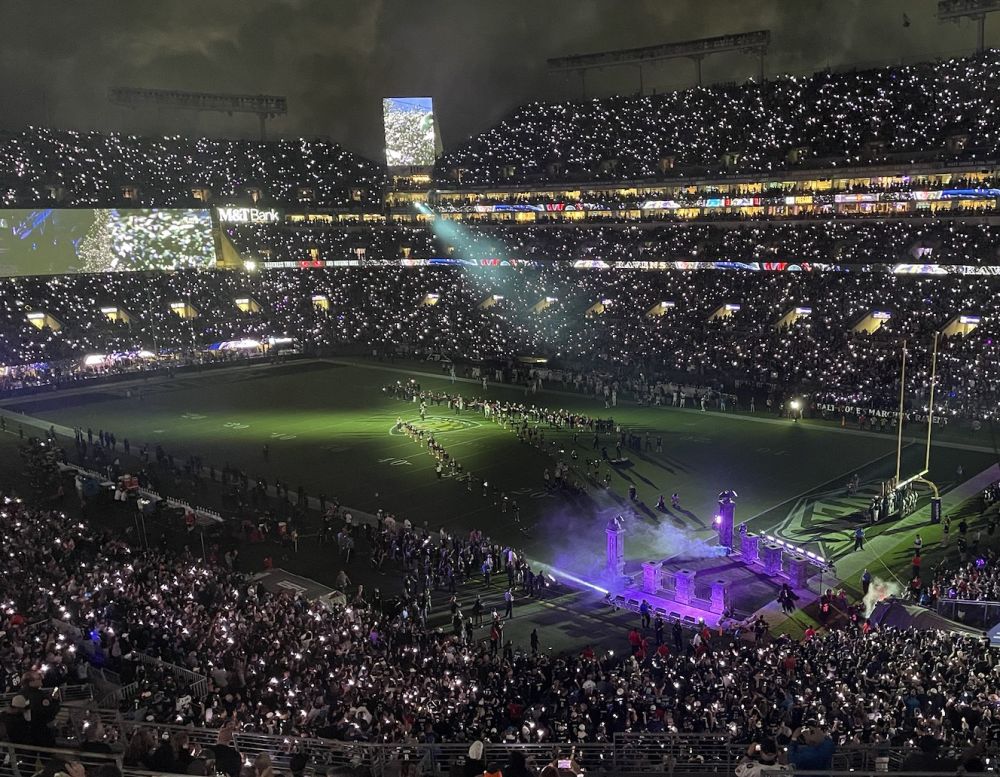Chris Davis might be the best example of what the 2012 Orioles are all about.
Entering the season with untapped potential and more failure than success at the big-league level, both Davis and the Orioles have blossomed in the first 2 1/2 months of the season, surpising critics and even the most optimistic fans in what’s been Baltimore’s best start since 2005.
The 26-year-old Davis has morphed into a fan favorite in his first full season with the Orioles, not only becoming one of the team’s most productive hitters but providing one of the craziest memories in club history when he pitched two innings to earn the win in a 17-inning marathon at Fenway Park on May 6.
http://www.youtube.com/watch?v=v3_OflQilqU
Add a broken-bat home run against Pittsburgh last week and his first games in right field at the big-league level this past weekend in Atlanta and you have all the makings of a folk hero in Baltimore.
Much like the 39-27 Orioles, at times, it’s difficult to believe what you’re seeing when watching the designated hitter/first baseman/right fielder/pitching extraordinaire.
But there’s no understating how important Davis’ emergence has been this season, especially with stints on the disabled list by Nolan Reimold, Mark Reynolds, and Nick Markakis. Center fielder Adam Jones has emerged as a superstar by leading the Orioles in batting average, home runs, runs batted in, slugging percentage, and runs scored, but Davis ranks second or third in all five of those categories in becoming a legitimate middle-of-the-order threat in the lineup.
His 12 home runs and 60 strikeouts in 211 at-bats entering Monday night aren’t overly surprising given Davis’ reputation when the Orioles acquired him in the Koji Uehara trade last July, but his .294 average defies what we saw over his last three years in Texas where Davis went from looking like a future star in 2008 to a player fitting the mold of a “Quad-A” hitter before being dealt.
The raw power has never come into question — evident by his broken-bat homer to right field off Pittsburgh reliever Tommy Watson last Wednesday — as Davis hit 17 home runs and batted .285 in 295 at-bats during his rookie season with the Rangers in 2008. However, the left-handed slugger quickly earned the reputation of a hitter who struck out too much, didn’t walk enough, and struggled to handle plus-fastballs in the major leagues. Those flaws led his batting average to plummet to .238 in 2009 and .192 in 2010, causing Davis to bounce back and forth between the Rangers and Triple A in his final three years in Texas.
It was difficult to project Davis as anything more than a less-patient, less-powerful version of Reynolds entering the season, which didn’t speak highly for his potential when considering how flawed Reynolds is as a player.
In 2012, Davis hasn’t made any dramatic changes to his overall approach — 60 strikeouts to just 13 walks — but his improvement against plus-fastballs has led to the substantial increase in average. A career .204 hitter in 255 career at-bats against power pitchers (those in the top third in the league in strikeouts plus walks) entering 2012, Davis has handled them at a .286 rate in 42 at-bats this season.
Davis has also handled left-handed pitching at a far more successful clip, batting .327 in 53 plate appearances against southpaws in 2012 after hitting only .236 against lefties in 275 career at-bats entering 2012.
While his high strikeout and low walk totals aren’t indicative of a hitter that will continue to hover around the .300 mark, Davis has been a model of consistency through his first 57 games this season. Aside from an abysmal seven-game stretch in May in which he went 3-for-28 and struck out 14 times, the left-hander has consistently sat somewhere between .290 and .310 as we reach the final two weeks of June. His .355 batting average for balls put in play indicates Davis has been fortunate, but it’s actually lower than the .366 combined clip he posted last year for the Rangers and Orioles.
When seeing the ball well, Davis shows exceptional power to straightaway center and the opposite field has eight of his 12 home runs have traveled in either of those directions.
After Markakis was placed on the 15-day disabled list with a broken hamate bone, manager Buck Showalter turned to Davis to hold down the No. 3 spot in the order as the Orioles were depleted even further offensively. He’s hit only .206 in 34 at-bats batting third, but the lineup shift could present an interesting decision for Showalter when Markakis returns — projected to be some time during the next homestand, according to the right fielder.
Should Davis remain around the .300 mark, would you consider keeping him in the third spot and moving Markakis to the No. 2 slot? The move would allow Showalter to drop J.J. Hardy in the order, which would make sense with the shortstop hitting only .253 despite 11 home runs.
Whatever the Baltimore skipper decides, it’s a good problem to have.
For a team suffering its fair share of injuries and not receiving the same power numbers it enjoyed from Reynolds a season ago, Davis’ emergence has been one of the most pleasant surprises of the season.
His willingness to do whatever is asked of him reflects the spirit of the 2012 Orioles.
Need someone to pitch? Not a problem.
You want to put me in right field in a National League ballpark, even though I’ve never played there in the big leagues? Sure thing.
Whatever it takes to win.
Much like watching the Orioles, you keep waiting and wondering if it’s going to last, but Davis has given no indication of slowing down any time soon.
And he just might be realizing the potential so many saw in him when he first arrived in the big leagues.


























